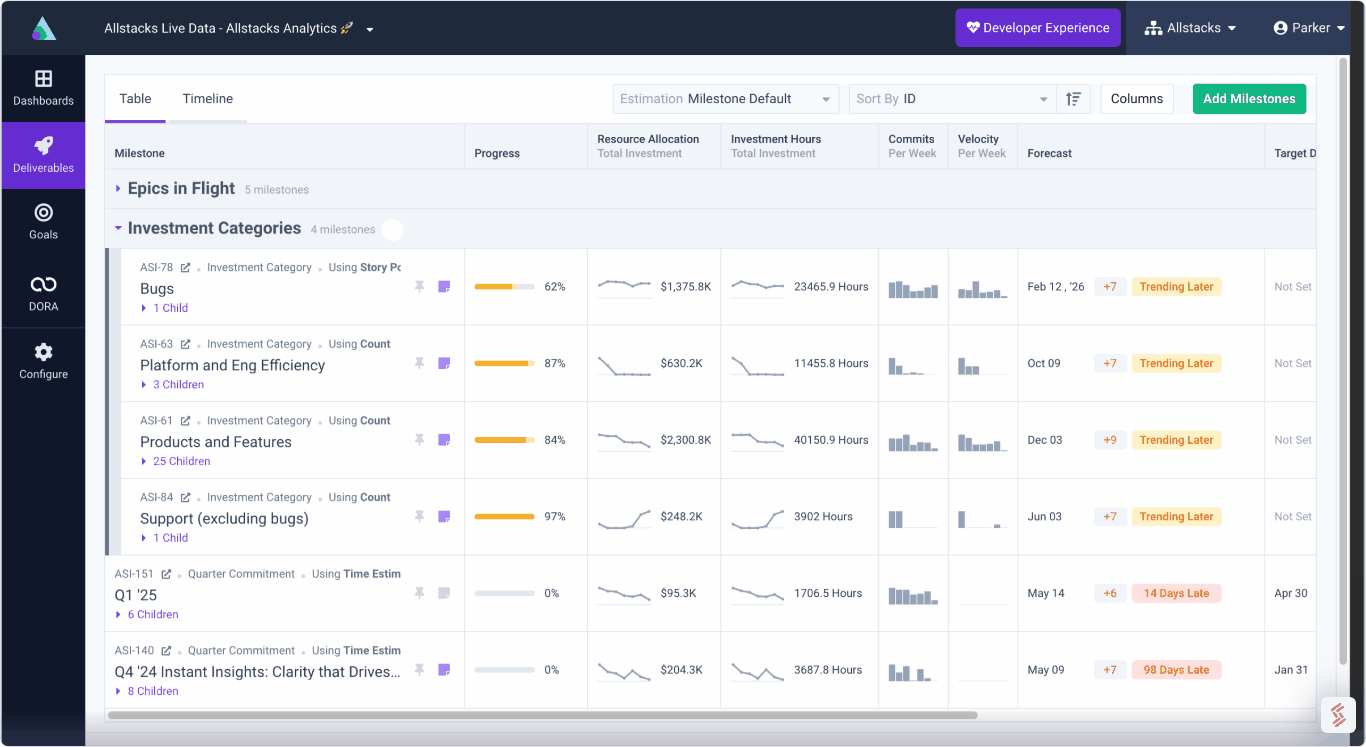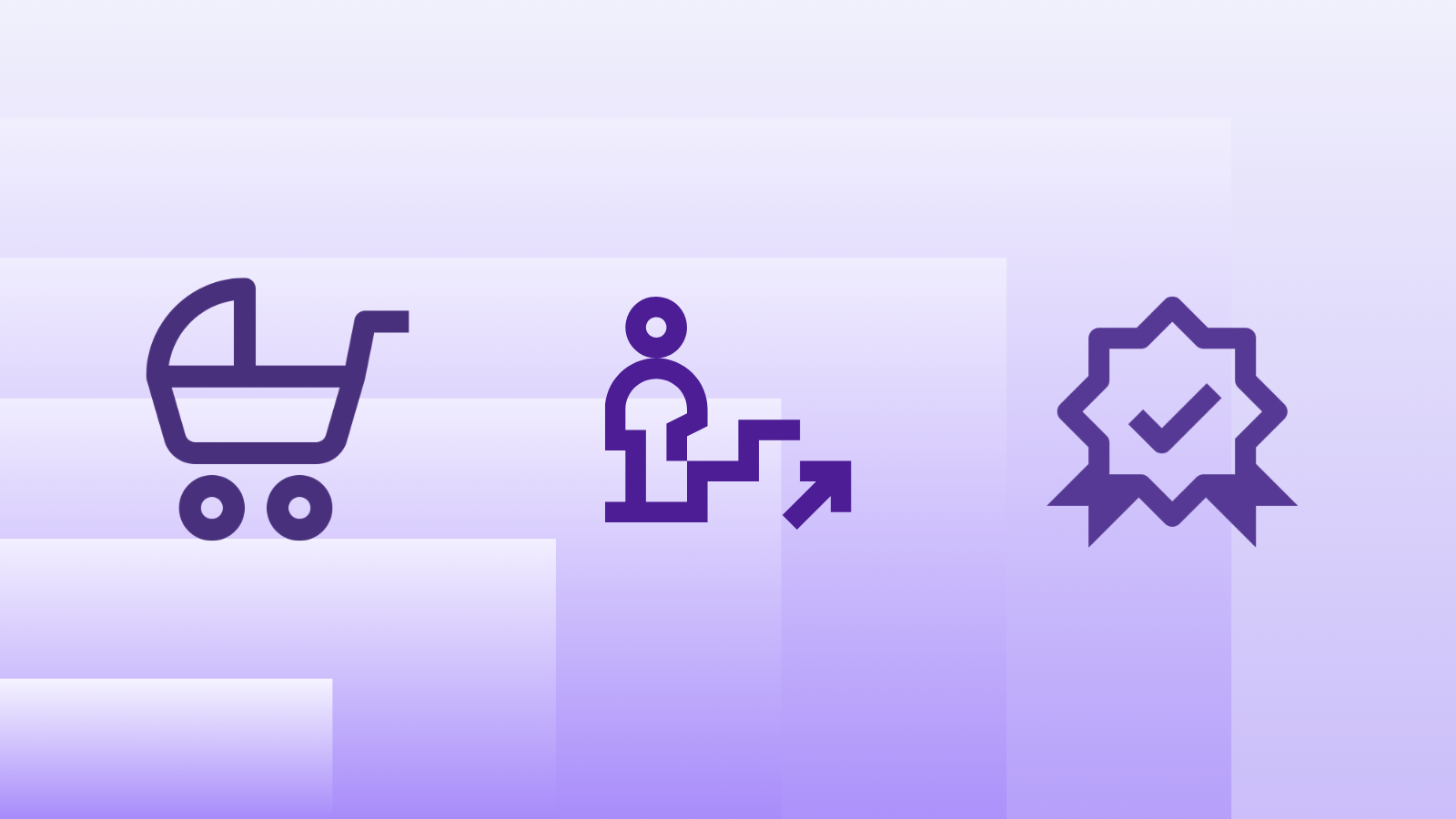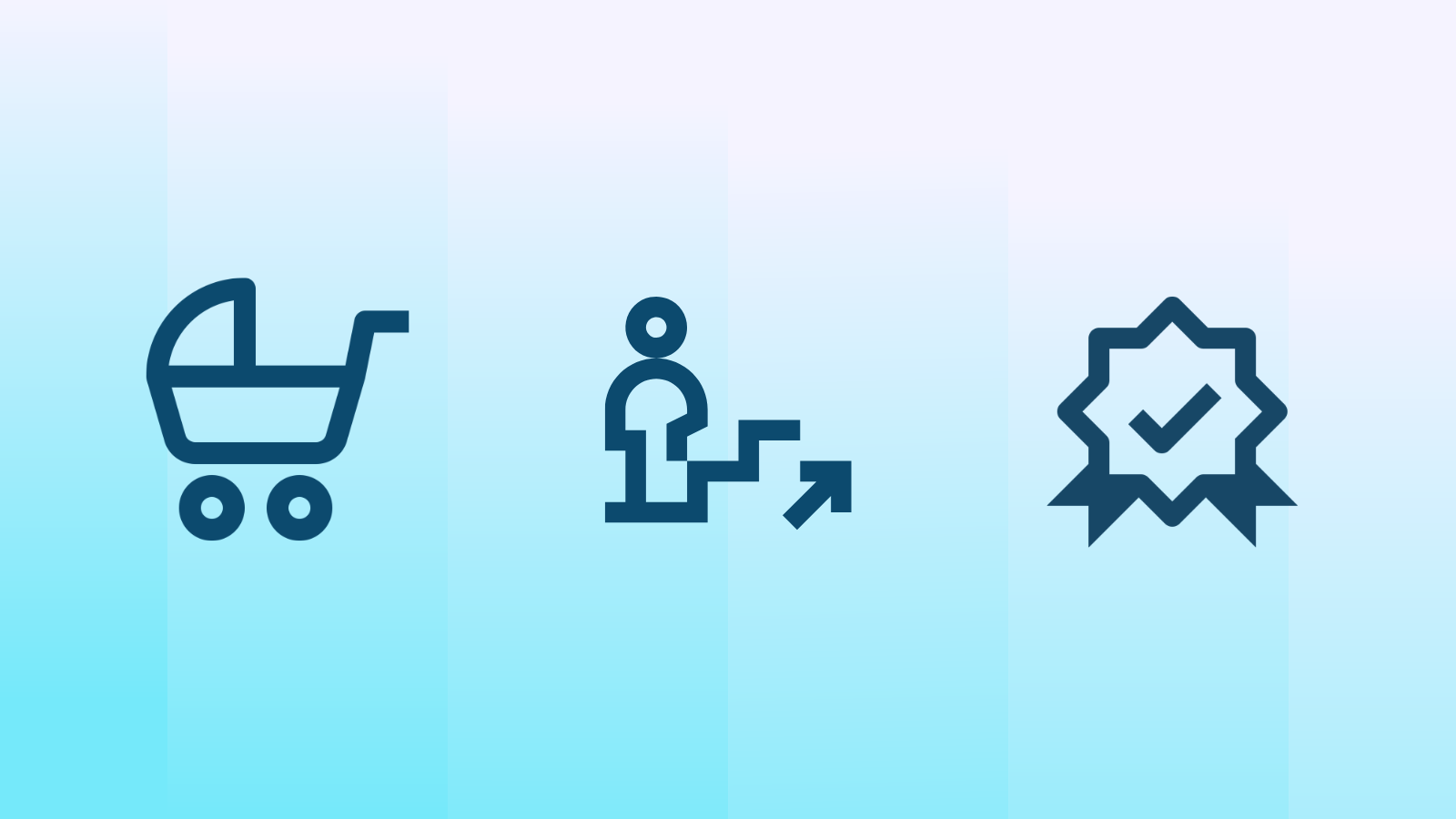.png)
Software Engineering Intelligence
-
Intelligence Engine
On-demand exhaustive AI-analysis
-
Engineering Investment
Complete visibility into time & dollars spent
-
360º Insights
Create meaningful reports and dashboards
-
Project Forecasting
Track and forecast all deliverables
DevEx
-
Developer Surveys
Create and share developer surveys
Software Capitalization
-
R&D Capitalization Reporting
Align and track development costs
Software Development Metrics - Taking Your First Steps in the Walk Phase with Allstacks
Since our last post, you've spent time in the crawl phase getting familiar with your baseline metrics. Now it's time to leverage that foundation and start making intentional improvements.

From Crawling to Walking: The Natural Progression
Remember our Crawl/Walk/Run approach? You've spent time in the crawl phase getting familiar with your baseline metrics. You know where you stand. You've got a few weeks of data in Allstacks showing your team's current performance. Now it's time to leverage that foundation and start making intentional improvements.
Think of it like this: if crawling was about learning where you are, walking is about deliberately moving toward where you want to be.
The Walk phase is fundamentally about improving overall predictability. After all, the holy grail of software development isn't just speed or quality – it's knowing with confidence when something will be done and at what level of quality. Predictability builds trust across the organization and creates the stability needed for strategic planning.
What Does "Walking" Look Like in Practice?
In the Walk phase, we're going to:
- Expand beyond basic metrics to more sophisticated measurements
- Have a 360° view to reveal deeper insights
- Establish regular team rhythms around metrics
Let's dive into how Allstacks can help you do this!
Expanding Your Metrics Portfolio
While crawling, you probably focused on 3-4 simple, easy-to-collect metrics. Now it's time to broaden your horizons:
1) Understand Portfolio Investments
- Leverage Allstacks' Investment Intelligence capabilities to monitor if all initiatives in your portfolio are truly on track
- Compare actual investment insights to agile metrics data
- Identify which portfolio projects may need intervention before they become problematic
Allstacks Investment Intelligence:
Note: The figure above indicates that the primary engineering investment in one team is occurring on Products and Features. This positive indicator means the predominance of time is being spent on advancing the product and that a minority of time is spent on support functions.
2) Dig Deeper into Code and Operational Quality
- Move beyond just tracking defects to measuring test coverage
- Use Allstacks to monitor code complexity trends
- Track technical debt, bug remediation efforts quantitatively
PR Cycle Time:
Note: The figure above represents cycle time for pull requests. The data indicates a very healthy process in which time from first commit to deployment merge is both occurring inside of 2 week sprint windows and is in fact moving toward less than 1 week.
DORA Scorecards:

Note: The figure above shows a standard DORA scorecard view. In this readout, the target metrics are all hitting or exceeding their goals with the exception of Time to Restore Service. This indicates the teams should take a look at internal prioritization processes to determine how to achieve faster to repair approaches.
3) Start Measuring Team Health and Developer Experience
- Track knowledge distribution across your codebase
- Use Allstacks' team dashboards to ensure balanced workloads
- Leverage the Allstacks DevEx insights we explored in earlier blogs to create a more productive environment
Note: The figure above indicates the teams are regularly being polled to understand their individual and collective points of view regarding work, tooling and culture. Gathering these perspectives provide qualitative and vital viewpoints into the mindset of the teams.
Establishing Metrics Rhythms
What's great about the Walk phase is that Allstacks does the heavy lifting on data collection, so you can focus on analyzing and improving rather than spending hours gathering information.
- Daily: Quick Allstacks dashboard checks to stay on track
- Weekly: Team reviews of key metrics and trend analysis
- Monthly: Deeper dives into investment patterns and setting adjustment goals
With Allstacks, these reviews become quick and painless because the data is always current and presented in context. No more hours spent preparing reports – just open the dashboard and focus on the conversation that matters.
Avoiding Common Pitfalls in the "Walk" Phase
As you expand your metrics practice, watch out for these common trips and stumbles:
- Metrics Overload: Just because you can measure everything doesn't mean you should. Continue to keep it relatively simple and use Allstacks to focus on metrics that drive decisions.
- Losing the Human Element: Remember that behind every metric is human behavior. Allstacks helps by providing context, but you need to maintain the connection to the people doing the work.
- Optimization Silos: Be careful not to optimize one metric at the expense of others. Allstacks' holistic view helps you see these tradeoffs clearly.
Setting Yourself Up for the "Run" Phase
The Walk phase is where good habits form. You're not just collecting metrics – you're building a metrics-driven culture. With predictability as your north star during the Walk phase, you're establishing the credibility needed to make more ambitious moves in the Run phase. And by leveraging Allstacks' investment analysis capability, you're ensuring that your entire development ecosystem – not just individual teams or projects – is moving in the right direction.
Think of what you're doing now as training for a marathon. You're building stamina, developing muscle memory, and fine-tuning your approach for when you really hit your stride.
Ready to Pick Up the Pace?
By now, you should be confidently walking with your metrics program, using Allstacks to guide meaningful improvements across your development process. You're no longer just measuring; you're managing with metrics.
In our next post, we'll tackle the final phase of our journey – the Run phase – where we'll talk about advanced optimization, predictive analytics, and how to use Allstacks to achieve true mastery and development excellence.
Until then, keep those metrics moving forward, one step at a time!
Note: This post is Part 2 of our 4-part "Crawl/Walk/Run" series. Read on to explore Part 1, Part 3, and Part 4.




